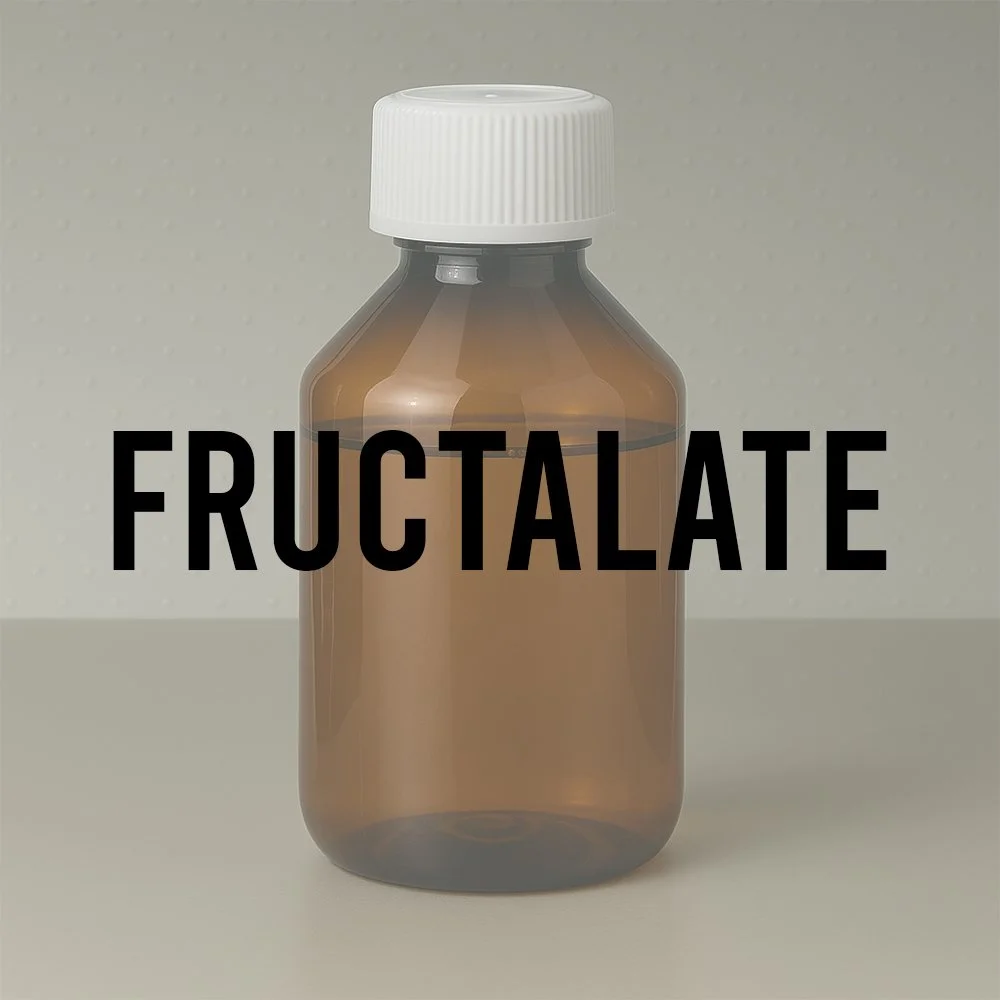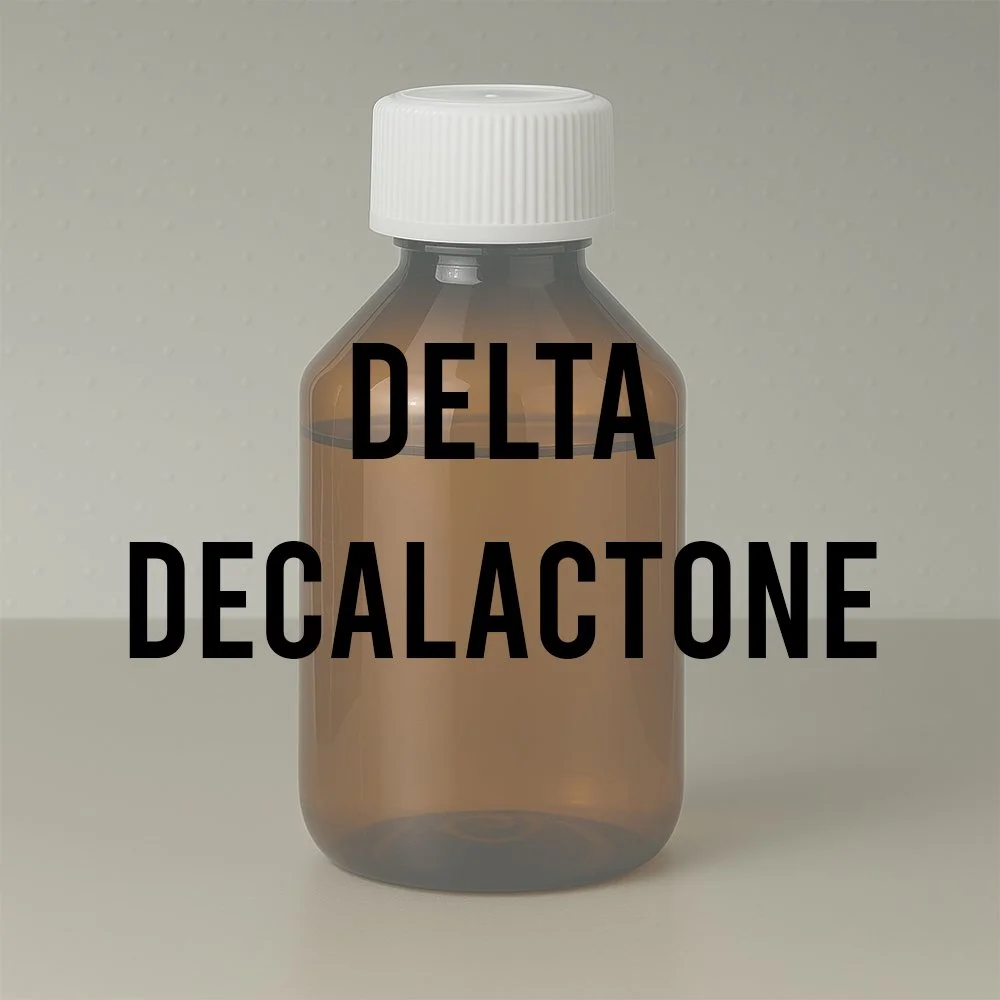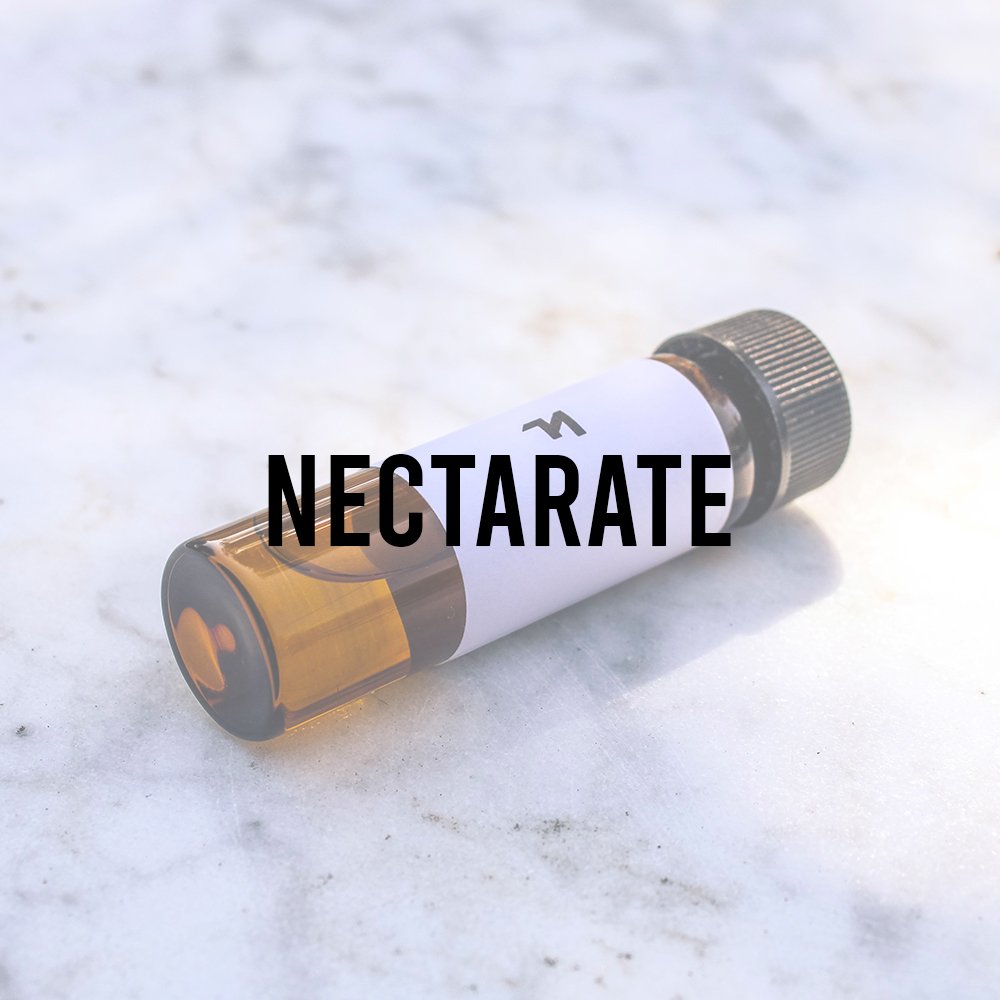Natural Ingredient Overview
🔎 Botanical Name — Artemisia pallens Wall. ex DC.
🧪 Synonyms — Davana Herb Oil, Artemisia pallens Oil, Davana Flower Oil
🧬 Chemical Formula — Complex mixture (primary constituents: davanone, davana ether, linalool, davana furan)
📂 CAS Number — 8016-03-3
📘 FEMA Number — 2359
⚖️ Molecular Weight — Not applicable (essential oil mixture)
📝 Odor Type — Fruity / Herbaceous / Balsamic
📈 Odor Strength — Medium to Strong
👃🏼 Odor Profile — Sweet, tea-like, reminiscent of dried fruits (apricot, prune), herbaceous-green with balsamic undertone, slightly boozy character reminiscent of mulled wine, black currant facets, faint foliage-like notes
⚗️ Uses — Perfumery modifier in oriental, ambrée, chypre, and fougère compositions; flavoring in bakery products, tobacco, and beverages; fixative and blender in complex accords
🧴 Appearance — Dark orange-brown to brownish-green liquid; sometimes very dark green (characteristic of Artemisia oils)
What is Davana Oil?
Davana Oil is a natural essential oil obtained by steam distillation of the overground flowering parts of Artemisia pallensWall. ex DC., an annual branched herb belonging to the Asteraceae (Compositae) family. Native exclusively to southern India—particularly the Tamil Nadu and Karnataka regions around Bangalore—this knee-high plant resembles a small fern and produces tiny flowers at maturity that are exceptionally rich in essential oils (Burdock, 2010).
The essential oil composition is dominated by furanoid sesquiterpenes, with davanone, davana ether, davana furan, and linalool serving as primary constituents. Additional components include methyl cinnamate, ethyl cinnamate, bicyclogermacrene, 2-hydroxyisodavanone, farnesol, geranyl acetate, and various sesquiterpene lactones and germacranolides (Burdock, 2010; Lawrence, 2006).
Unlike other members of the Artemisia family—such as A. absinthium (wormwood) or A. dracunculus (tarragon)—Davana Oil presents a uniquely sweet, fruity-balsamic profile rather than sharp, camphoraceous, or bitter-green notes. This distinctive character makes it highly valued, though its production remains limited to approximately 4,000 kg annually (Burdock, 2010).
Historical Background
The distillation of Davana Oil began in southern India during the first half of the 20th century, though precise documentation of the original distiller or discovery year remains unavailable. Commercial production remained minimal and localized until the 1970s, when exports from India began to intensify as Western perfumers and flavorists discovered the oil's unique olfactory properties (Burdock, 2010).
The material gained significant commercial recognition in 1985 with the launch of Davana by fragrance creator Franka M. Berger, marking the first time a perfume was named after this relatively obscure botanical ingredient. This release brought Davana Oil into the consumer consciousness and established it as a niche yet highly regarded material in fine fragrance (Burdock, 2010).
Despite decades of cultivation and use, Davana remains a small-volume essential oil due to geographic limitations (it grows exclusively in southern India) and labor-intensive harvesting requirements. The plant must be harvested at peak maturity when flower heads are most fragrant, requiring careful timing and manual collection (Burdock, 2010; Lawrence, 2006).
Olfactory Profile
Scent Family
Davana Oil defies simple classification, occupying a unique position between fruity-balsamic and herbaceous-green categories. It is most commonly positioned within:
Oriental-Ambery accords (primary use)
Fruity-lactonic structures
Herbaceous-green modifiers
Chypre and fougère bases (trace amounts)
Main Descriptors
The olfactory character of authentic Davana Oil is highly distinctive and complex:
Top Notes: Sweet tea-like opening with pronounced dried fruit character (apricot, prune, sun-ripened fruit), slight black currant facet
Heart Notes: Herbaceous-green undertone emerges, balsamic sweetness intensifies, slightly boozy quality reminiscent of mulled wine or fruit liqueur
Base Notes: Tenacious balsamic drydown with foliage-like residue, faint resinous-woody undertone
Arctander (1960) described it as possessing "sharp, penetrating, bitter-green, foliage-like and powerfully herbaceous" opening notes balanced by a "sweet-balsamic, tenacious undertone." This duality—simultaneously green-herbaceous and fruity-sweet—creates its signature complexity.
Intensity
Medium to strong. The oil displays powerful projection in trace amounts but can become overwhelming if overdosed. Recommended usage in fine fragrance concentrates ranges from 0.01% to 0.5%, with optimal effect typically achieved at 0.05–0.1% (Arctander, 1960; Burdock, 2010).
Tenacity
Excellent. Davana Oil exhibits remarkable persistence for an essential oil with significant top-note character. The balsamic-fruity facets can remain detectable on blotters for 24–48 hours, while the base note provides extended fixative properties in compositions.
Volatility
Davana functions primarily as a heart to base note modifier despite its fruity-fresh opening. The complex sesquiterpene composition provides both volatile (linalool, cinnamates) and non-volatile (davanone, davana ether) components, creating a "staged release" olfactory effect.
Evaporation Rate: Medium-slow
Primary Impact Zone: Middle (heart) notes with base note tenacity
Diffusion: Moderate; projects well without excessive diffusion
Fixative Role
Davana Oil serves as a natural semi-fixative in oriental, ambery, and fruity compositions. Its high content of oxygenated sesquiterpenes (particularly davanone and its derivatives) contributes substantivity and helps anchor volatile top notes. It is particularly effective at:
Rounding and softening harsh synthetic aldehydes
Blending and unifying complex fruity accords
Providing naturalistic depth to lactonic or coumarinic structures
Adding warmth and complexity to woody-ambery bases
Applications in Fine Fragrance
Davana Oil occupies a specialized niche in modern perfumery, valued more for its modificative and blending properties than as a soliflore or dominant note.
Role in Fragrance Compositions
Primary Applications:
Oriental and Ambery Fragrances: Adds fruity-balsamic warmth and complexity; pairs exceptionally well with vanilla, benzoin, labdanum, and amber bases
Chypre Structures: Used in trace amounts (0.01–0.05%) to soften mossy-woody harshness and introduce subtle fruity-liqueur facets
Fougère Accords: Contributes herbaceous-sweet nuance that bridges lavender and coumarin; adds naturalistic complexity
Fruity-Floral Compositions: Enhances apricot, peach, and plum notes; provides body and tenacity to ephemeral fruit volatiles
Tobacco Accords: Reinforces dried fruit and slightly boozy characteristics in oriental-tobacco structures
Notable Commercial Fragrances
While specific formulations remain proprietary, Davana Oil has been documented or suspected in:
Davana by Franka M. Berger (1985): The first fragrance named after the material; heavily featured the ingredient
Various niche and artisanal fragrances emphasizing natural ingredients and oriental-ambery profiles
Japanese fragrance compositions, where Davana is particularly appreciated in both perfumery and flavor applications
The material is more commonly used as an undisclosed component in oriental, ambery, and fruity-floral compositions rather than as a highlighted "hero ingredient."
Performance in Formula
Behavior in Blends and Mixtures
Davana Oil exhibits excellent solubility in alcohol (typically 1:2 or 1:3 in 90% ethanol) and integrates readily into oil-based perfume carriers. The dark color (orange-brown to brownish-green) can tint final compositions, requiring consideration in clear or pale-colored formulations.
Key Performance Characteristics:
Blending: Smooth integration with minimal phase separation issues
Color Impact: Contributes amber-brown hue; may darken light compositions
Stability: Good stability in alcoholic solutions; less stable in aqueous systems
pH Sensitivity: Relatively stable across typical cosmetic pH ranges (4.5–7.5)
Diffusion Characteristics
Davana Oil demonstrates moderate to good diffusion without excessive volatility. The balanced composition of monoterpenoids (linalool) and sesquiterpenoids (davanone, davana ether) creates a "staged release" profile:
Initial diffusion of linalool and cinnamates provides immediate fruity-fresh impact
Middle-stage release of davanone and davana ether sustains character
Base-note persistence of higher-molecular-weight sesquiterpenes provides lasting fixation
This diffusion profile makes Davana particularly useful in eau de toilette and eau de parfum concentrations, where it bridges top and base notes effectively.
Impact on Overall Composition
Even at low concentrations (0.05–0.1%), Davana Oil significantly impacts:
Perceived Warmth: Adds sweet-balsamic warmth without heaviness
Complexity: Introduces multi-dimensional fruity-herbaceous character
Naturalness: Enhances perceived authenticity of synthetic accords
Smoothness: Rounds edges and softens harsh transitions between notes
Tenacity: Extends overall fragrance longevity, particularly in middle notes
Fixative Strength and Properties
Davana Oil functions as a medium-strength natural fixative, particularly effective for:
Volatile fruity esters (ethyl butyrate, isoamyl acetate)
Fresh green notes (galbanum, violet leaf)
Delicate floral volatiles (neroli, orange blossom)
Light aldehydic structures (citral, decanal)
Fixative mechanism is primarily through chemical association (hydrogen bonding of oxygenated sesquiterpenes with volatile carbonyls and hydroxyls) rather than simple entrapment in a viscous matrix.
Industrial & Technical Uses
Beyond fine fragrance, Davana Oil finds specialized applications in several industries:
Flavor Industry
Davana Oil holds FEMA GRAS status (FEMA #2359) for use in food flavoring applications. It is particularly valued in:
Bakery Products: Enhances fruit flavors in pastries, cakes, and cookies; adds complexity to dried fruit notes
Beverages: Used in specialty teas, fruit-based drinks, and alcoholic beverages (liqueurs, flavored spirits)
Tobacco Flavoring: Adds sweet, fruity-balsamic character to tobacco products; particularly popular in Asian markets (Japan)
Confectionery: Supports apricot, peach, and mixed fruit flavors in candies and desserts
Typical usage levels in flavor applications range from 0.2 to 2.0 ppm depending on the food category and desired intensity (Burdock, 2010).
Aromatherapy and Wellness
In aromatherapy practice, Davana Oil is traditionally used for:
Emotional balancing and stress relief
Meditation and spiritual practices (historically used in Indian religious ceremonies)
Skin care applications (purported balancing properties for combination skin)
Note: Aromatherapeutic claims are based on traditional use and anecdotal evidence; rigorous clinical validation is limited.
Pharmaceutical and Cosmetic Applications
Limited use in:
Cosmetic formulations as a natural fragrance component (subject to IFRA restrictions)
Traditional Ayurvedic preparations in India
Research into antimicrobial and insecticidal properties (Kim et al., 2008)
Regulatory & Safety Overview
IFRA Status
Davana Oil is not specifically restricted under IFRA Amendment 51 (2023) as an essential oil mixture. However, individual constituents within the oil may be subject to restrictions:
Linalool: Restricted due to oxidation products (hydroperoxides); must comply with IFRA Category limits
Cinnamates (methyl cinnamate, ethyl cinnamate): Subject to sensitization assessment
Geraniol: Restricted due to oxidation potential
Recommendation: Perfumers should consult the most current IFRA Standards at https://ifrafragrance.org/standards and conduct allergen calculations based on actual composition of the specific batch being used.
Maximum Use Levels (general guidance based on constituent restrictions):
Category 1 (Lip Products): Use with caution; calculate based on linalool content
Category 2 (Deodorants/Antiperspirants): Up to 0.5% in fragrance concentrate
Category 3 (Eye Products): Not recommended
Category 4 (Hydroalcoholic Fragrances): Up to 1.0% in fragrance concentrate
Categories 5–11: Use levels depend on final product type and linalool/geraniol content
EU Cosmetics Regulation
Under EU Regulation (EC) No 1223/2009, Davana Oil is permitted for use in cosmetic products with the following considerations:
Allergen Labeling Requirements: The following naturally occurring allergens in Davana Oil must be declared if present above threshold levels:
Linalool: Label if >0.001% in leave-on products, >0.01% in rinse-off products
Geraniol: Label if >0.001% in leave-on products, >0.01% in rinse-off products
Citral: Label if present above thresholds (though typically low in Davana)
Allergen content varies by batch and distillation conditions. Analytical testing (GC-MS) is required for accurate allergen declaration.
Compliance Status: Davana Oil (CAS 8016-03-3) is not listed in Annex II (prohibited substances) and is acceptable for use in cosmetic products within safe concentration limits and proper labeling.
FEMA Status
FEMA GRAS: Davana Oil is listed under FEMA #2359 as "Davana Oil (Artemisia pallens Wall.)" and holds Generally Recognized as Safe (GRAS) status for use in food flavoring within established use levels.
Maximum typical use levels in food:
Beverages: 0.5–2.0 ppm
Baked goods: 1.0–5.0 ppm
Confectionery: 2.0–10.0 ppm
Source: FEMA Flavor Library
Sustainability and Sourcing Considerations
Geographic Limitation
Davana Oil's exclusive cultivation in southern India creates both opportunities and challenges:
Limited Supply: Annual production (~4,000 kg globally) makes this a specialty ingredient with potential supply volatility
Price Fluctuation: Weather conditions, crop yields, and geopolitical factors in India directly impact availability and pricing
Authenticity Concerns: Limited supply incentivizes adulteration; verification via GC-MS is essential
Conclusion
Davana Oil (Artemisia pallens) represents a unique and valuable addition to the perfumer's palette, offering a complex fruity-herbaceous-balsamic profile unmatched by other natural materials. Its distinctive dried-fruit character, combined with tenacious fixative properties and excellent blending behavior, makes it particularly suited to oriental, ambery, fruity-floral, and modified chypre compositions.
Despite limited annual production and geographic exclusivity to southern India, Davana Oil has earned a respected position in both fine fragrance and flavor applications, particularly in the United States and Japan. Perfumers and formulators should source carefully from reputable suppliers, verify authenticity through analytical testing, and handle with proper storage practices to ensure optimal quality and longevity.
When used judiciously at appropriate concentration levels (typically 0.05–0.5%), Davana Oil imparts warmth, complexity, and naturalistic character that elevates compositions beyond the reach of purely synthetic formulations. Its regulatory compliance (IFRA acceptable with standard allergen precautions; FEMA GRAS for flavor use) and relatively favorable safety profile further support its continued use in modern perfumery and flavoring.
For Scentspiracy clients seeking to explore the unique territory between fruity sweetness and herbaceous complexity, Davana Oil offers a distinctive tool that rewards careful study and thoughtful application.
References
Arctander, S. (1960). Perfume and flavor materials of natural origin. Published by the author.
Burdock, G. A. (2010). Fenaroli's handbook of flavor ingredients (6th ed.). CRC Press.
Kim, S. I., Roh, J. Y., Kim, D. H., Lee, H. S., & Ahn, Y. J. (2008). Insecticidal activities of aromatic plant extracts and essential oils against Sitophilus oryzae and Callosobruchus chinensis. Journal of Stored Products Research, 44(4), 372-378. https://doi.org/10.1016/j.jspr.2008.04.002
Lawrence, B. M. (2006). Essential oil variability in Artemisia pallens from India. In B. M. Lawrence, Progress in essential oils (pp. 23-28). Allured Publishing.
Perfumer & Flavorist. (n.d.). Davana oil. Retrieved from https://www.perfumerflavorist.com/fragrance/ingredients/article/21859514/davana-oil












